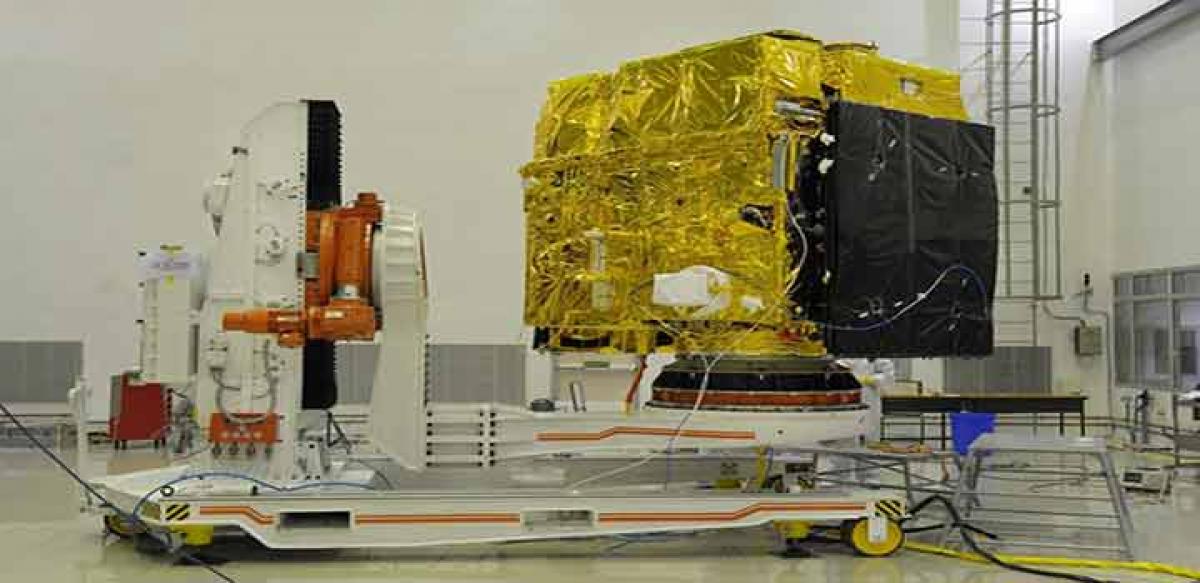Live
- Hyderabad court denies bail to 3 police officers in phone tapping case
- Apollo Hospitals' unit to raise Rs 2,475 crore from PE firm Advent International
- More than 70 per cent voter turnout in Assam till 5 PM
- Repeated and persistent doubts on EVMs can have contrarian impact of creating distrust: SC
- World Veterinary Day 2024: Celebrating Veterinarians as Guardians of Animal Welfare
- Addl DC Assured Measures to procure paddy
- Civil Engineer held in drug trade in Goa, contraband valued at Rs 8.5 lakh seized
- CM Vijayan loses cool when asked if elections would be assessment of his governance
- Punjab Congress chief challenges BJP to nominate state prez Jakhar to contest polls
- Mamata Banerjee continues to fire salvos at Calcutta HC against ruling in school jobs case
Just In

Accomplishments in space are not new to India. But, the successful launch of Astrosat is unique for several reasons. Indian space science community deserves all the praise for their stupendous achievement.
.jpg)
Accomplishments in space are not new to India. But, the successful launch of Astrosat is unique for several reasons. Indian space science community deserves all the praise for their stupendous achievement.
With the successful launch of Astrosat , India is now among a select group of nations owning space observatory. The other countries to have this distinction include United States, Japan , Russia and Europe .
This list itself speaks volumes of India’s triumph. The Polar Satellite Launch Vehicle (PSLV) that carried Astrosat also launched four US satellites, one each from Indonesia and Canada.
This is not the first time India is launching foreign satellites. India has already made a foray into the highly competitive but lucrative global space market. But, this is the first time an Indian rocket launched satellites from the United States.
The Indo–US space partnership is to continue. The Indian Space Research Organisation (ISRO) has signed a deal to put into orbit nine nano/micro satellites of United States, out of which four have been launched now.
The remaining five satellites are expected to be put into the orbit by the end of 2016. This is yet another illustration of global testimony to India’s space competence.
It’s extremely gratifying to note that the super power which once imposed crippling sanctions on the Indian space proramme is now partnering with us.
The PSLV has done it again. For the third time, the rocket has launched seven satellites in a single mission. This is the 30th consecutive successful mission of PSLV.
India has commercially launched 51 foreign satellites so far indicating the country’s decisive entry into the world space market.According to Antrix Corporation, the commercial arm of ISRO , India has signed deals to launch 23 more foreign satellites soon.
Commentators described Astrosat as India’s Hubble. Even the international news agencies called it a mini-Hubble. But, ISRO scientists were humble: It’s wrong to come to such a conclusion.
The Hubble was launched by the United States in 1990. It is ten times heavier than the Astrosat. The Astrosat has far lower precision than Hubble. While the Hubble space telescope is still in operation, the Astrosat’s life span is only five years.
However , Astrosat will also observe the universe. It’s an Indian eye in the sky. This observatory called Astrosat will help Indian space scientists to intensify space exploration efforts by studying distant celestial objects and conduct deeper analysis of star system.
Satellites have now become instruments of neighbourhood diplomacy after Prime Minister Narendra Modi offered to launch SAARC satellite. This satellite is expected to be in the orbit by end of 2016.
The present success is a culmination of India’s remarkable journey into space. The low cost Mars Mission of India called Mangalyaan entered the red planet’s orbit in its very first attempt, which even developed nations could not do.
The ISRO’s missions in the coming months include commercial launch of six Singapore satellites, couple of navigational satellites and GSAT -15. Many more laurels are in store. Many more proud moments are in the offing. Kudos to ISRO!
Editor: Prof K Nageshwar

© 2024 Hyderabad Media House Limited/The Hans India. All rights reserved. Powered by hocalwire.com







